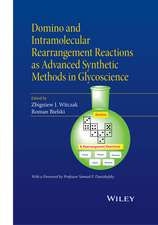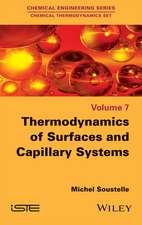Chemistry of Hydrocarbon Combustion
Autor David Hucknallen Limba Engleză Paperback – 13 oct 2011
Preț: 392.74 lei
Nou
Puncte Express: 589
Preț estimativ în valută:
75.22€ • 77.50$ • 63.01£
75.22€ • 77.50$ • 63.01£
Carte tipărită la comandă
Livrare economică 22 februarie-08 martie
Preluare comenzi: 021 569.72.76
Specificații
ISBN-13: 9789401086493
ISBN-10: 9401086494
Pagini: 428
Ilustrații: VIII, 416 p.
Dimensiuni: 155 x 235 x 22 mm
Greutate: 0.59 kg
Ediția:Softcover reprint of the original 1st ed. 1985
Editura: SPRINGER NETHERLANDS
Colecția Springer
Locul publicării:Dordrecht, Netherlands
ISBN-10: 9401086494
Pagini: 428
Ilustrații: VIII, 416 p.
Dimensiuni: 155 x 235 x 22 mm
Greutate: 0.59 kg
Ediția:Softcover reprint of the original 1st ed. 1985
Editura: SPRINGER NETHERLANDS
Colecția Springer
Locul publicării:Dordrecht, Netherlands
Public țintă
ResearchCuprins
1 Historical background.- 1.1 Early hypotheses.- 1.2 Studies of hydrocarbon combustion, 1930s to mid-1950s.- 1.3 Summary and conclusions.- 1.4 References.- 2 Analytical—phenomenological studies of overall hydrocarbon combustion.- 2.1 Introduction.- 2.2 Alkanes.- 2.3 Alkenes.- 2.4 Cycloalkanes and aromatic compounds.- 2.5 References.- 3 Study of elementary reactions involved in hydrocarbon combustion.- 3.1 Conventional indirect methods.- 3.2 Specialized indirect techniques.- 3.3 Direct methods involving production and monitoring of specific atoms or radicals.- 3.4 References.- 4 Some elementary species (other than those containing carbon) involved in combustion.- 4.1 Introduction.- 4.2 Hydroxyl (OH) radicals.- 4.3 Hydroperoxy (HO2) radicals.- 4.4 Oxygen (O) atoms.- 4.5 Hydrogen (H) atoms.- 4.6 References.- 5 Elementary carbon-containing species in combustion.- 5.1 Alkyl radicals.- 5.2 Alkylperoxy radicals.- 5.3 Alkoxy radicals.- 5.4 Acyl and acylperoxy radicals.- 5.5 Other hydrocarbon radicals.- 5.6 References.- 6 Pyrolytic reactions of hydrocarbons.- 6.1 Introduction.- 6.2 Pyrolysis of alkanes.- 6.3 Pyrolysis of alkenes and dialkenes.- 6.4 Pyrolysis of alkynes.- 6.5 Pyrolysis of cycloalkanes and aromatic compounds.- 6.6 Coke and carbon formation.- 6.7 References.- 7 Prediction of the behaviour of combustion systems: modelling.- 7.1 Introduction.- 7.2 Stoichiometric/semikinetic models.- 7.3 Models based on detailed mechanisms.- 7.4 References.






